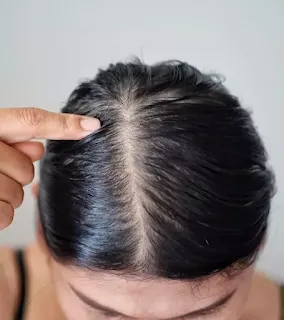Dry scalp and oily hair are common hair problems. A combination like this is often not noticed when discussing hair problems and the reason behind them can be difficult to understand. Oily curls can be difficult to manage, and combined with a dry scalp, it becomes even more difficult. If you encounter a similar issue, don't worry.
A dry scalp is mainly characterized by itching and flaking and may be a sign of itching . It occurs when your scalp is not properly hydrated. The shedding of the scalp is mainly caused by oil activity . The sebaceous glands produce sebum, a complex oil containing triglycerides, fatty acid, wax esters, squalene, cholesteryl esters, and cholesterol. When less sebum is secreted, the scalp becomes malnourished and begins to shed. The reduction in sebum production can be caused by a number of issues such as:
excessive shampooing
Fungal or bacterial infections
Weather conditions
Thermal damage from styling tools
hair dyes
Improper hygiene and health care
On the other hand, oily hair is a sign of excessive sebum production. Excessive oil production can clog the pores on your scalp, inhibiting hair growth. Hair thinning is often associated with excessively oily hair. A dry scalp along with oily hair is quite common and usually occurs in people with straight hair. If you have straight hair, sebum moves easily along the length of your hair, leaving your scalp dry and your hair very oily. Another suggestion is that there may be a lot of dirt and product residue in the pores of your scalp. These clogged pores push sebum down the length of your hair, leaving your scalp dry.
SYMPTOMS
If you have a dry scalp with oily hair, you may notice the following symptoms:
Small white flakes on your scalp.
Your hair always looks straight.
You wash your hair every other day due to oiliness.
You may notice redness or small bumps on the scalp.
These symptoms can be quite bothersome, so you may want to treat them.
TREATMENT
The best treatment for a dry scalp is to moisturize it with deep conditioners, oils, and hair masks.
Keep your scalp moist by oiling regularly at least twice a week.
Use deep conditioning treatments made specifically for the scalp. These treatments will contain concentrated ingredients that nourish and moisturize the scalp.
You can also try moisturizing hair packs and masks that contain ingredients such as aloe vera, glycerin, and avocado while moisturizing your scalp.
Use refreshing and cleansing products to treat oily hair .
Use hair masks with rosemary and other sebum-balancing ingredients .
Instead of shampooing your hair regularly, you can use dry shampoos to remove excess oil from the strands.
Instead of washing your hair too often, you can shampoo your hair once or twice a week and wash the products together on other days. Co-washes and conditioning cleansers do not completely dry out the scalp like regular shampoos. However, they do not completely cleanse the scalp, so you need to shampoo at least once a week.




0 komentar:
Post a Comment